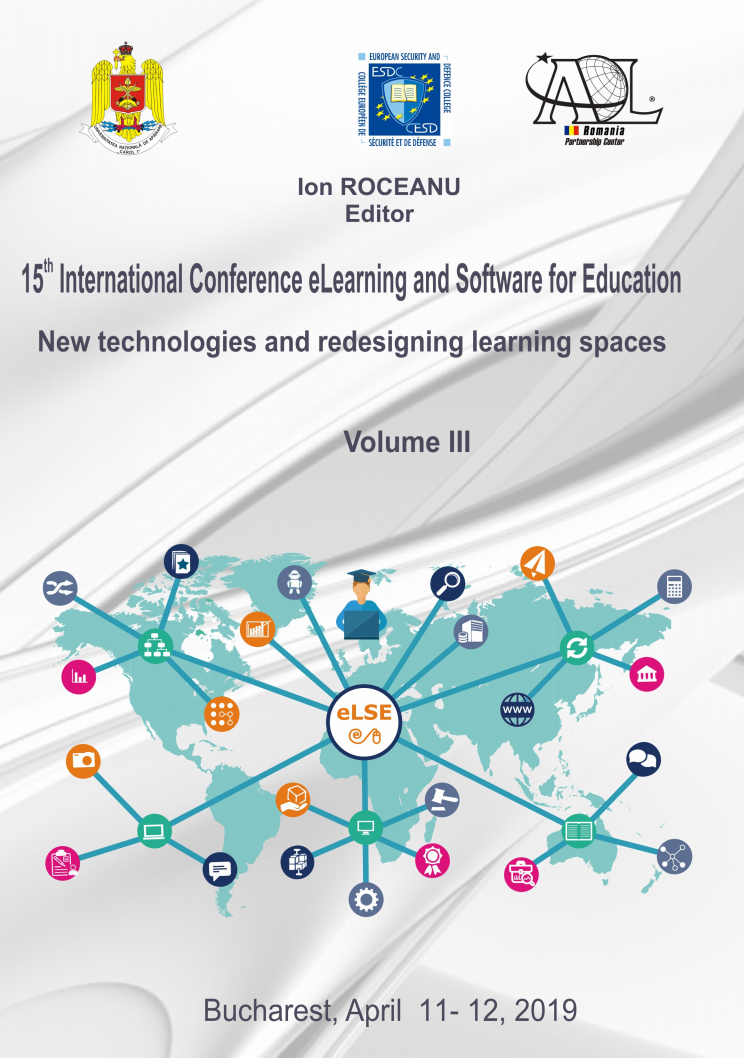Student’s Perceptions Regarding Learning Spaces within the E-Learning Context
Student’s Perceptions Regarding Learning Spaces within the E-Learning Context
Author(s): Bogdan Rusu, Mihaela Brîndușa TudoseSubject(s): Social Sciences, Education, Higher Education
Published by: Carol I National Defence University Publishing House
Keywords: teaching; learning; students, school results; e-learning efficiency;
Summary/Abstract: This study bases on previous research on student perceptions regarding e-learning. Enhancing IT integration in scholar activities compelled the providers of educational services to adapt and redesign their “learning spaces”. The aim of this research is to identify how the students perceived the new architecture and design of the new learning spaces through positive and negative feedback. Validation of the first hypothesis (that students own a laptop/ PC, mobile phone, etc.) enabled us to analyse an array of independent variables. These include the degree of use of electronic resources during teaching (blended teaching), their usage and easiness to be accessed, students’ interest to increase learning efficiency by accessing such resources on learning platforms and through virtual classes (that enable them to synchronise the learning “rhythm” with student possibilities, provision of self-assessment based on learning progress and interaction with colleagues during the learning process) and learning efficiency based on visual and audio memory. Dependent variables considered in the analysis are student grades and duration on navigation in virtual environment (on the Internet). There are two interesting results identified from data analysis. During teaching, the time spent in the virtual space (in order to access various electronic resources) is very important to ensure superior scholar results. Student grades improve with the student’s interest (as declared in the survey) to use platforms and access virtual classes for various stages of the learning process. Such outcome may be explained due to the possibility of students to adapt learning to their own rhythm and circumstances, opportunity to assess their own learning progress and communicate with colleagues. Such instant communication with classmates from other locations and/or geographical localities supports learning through peer discussions about what they are studying. Considering the disadvantages associated with e-learning we extended the research to include student’s perceptions regarding the importance of academic environment on learning. Results reveals that only the students with good and excellent grades (bursary and grades closed to bursary) and those that navigates a very large amount on the Internet considers this variable to be very important. The results of this research are valuable and may be used by scholars and University administrators to redesign the learning spaces and provide solutions that will better serve needs of the students.
Journal: Conference proceedings of »eLearning and Software for Education« (eLSE)
- Issue Year: 15/2019
- Issue No: 03
- Page Range: 434-443
- Page Count: 10
- Language: English

